Embarcadero C++ Builder - Segregation & Assimilation Patterns
Embarcadero C++ Builder - Segregation & Assimilation Patterns
SEGREGATION & ASSIMILATION MODELS Agents (cells) move to a new location (segregation) or change their identity (assimilation) based upon their local preferences for neighbors. Unless otherwise noted: SIGNIFICANCE We study segregation and assimilation models because they mirror social processes with which we are familiar. Each global pattern that you see below were produced by one specific set of local rules. Given the local rules, can you deduce the global patterns that they will produce? Understanding how the world works requires looking beneath the surface of things to understand how they came to be the way they are. |
Assimilation Models |
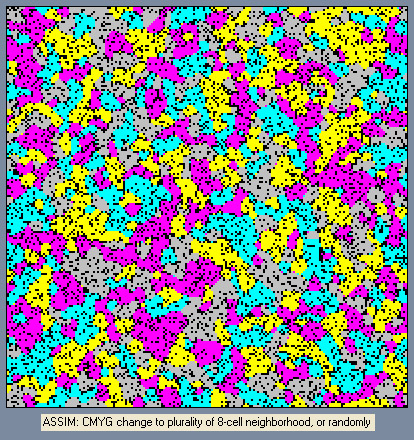 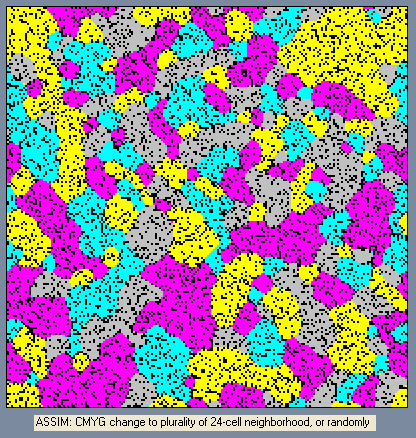 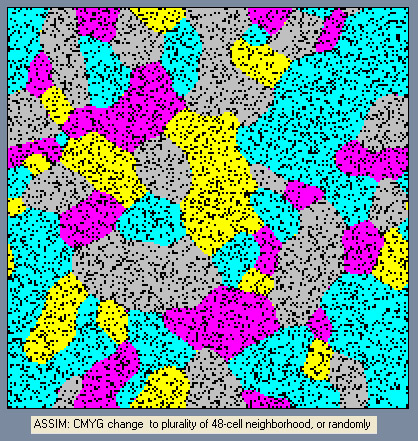 All assimilation simulations were run to 500 iterations. |
 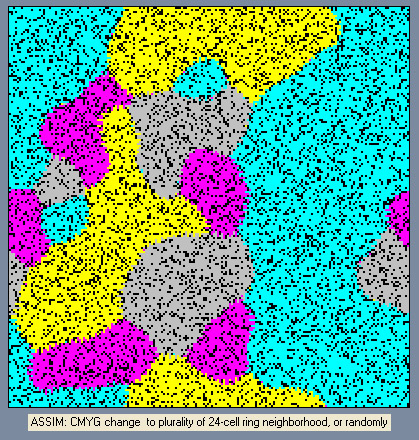 All assimilation simulations were run to 500 iterations. |
Segregation - Preference or Prejudice? |
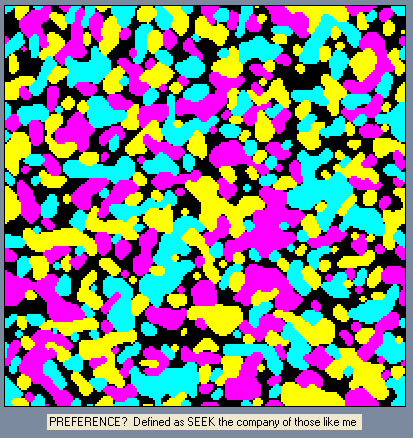 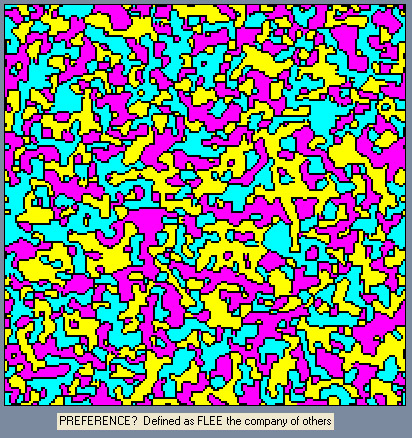 These simulations were run until they stabilized. |
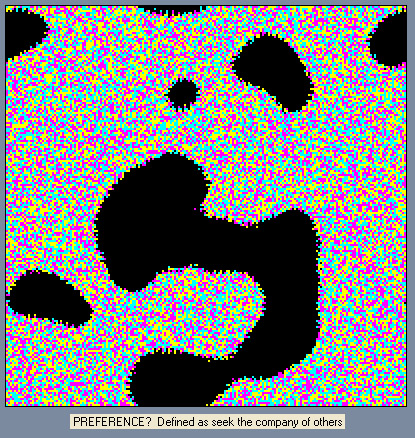 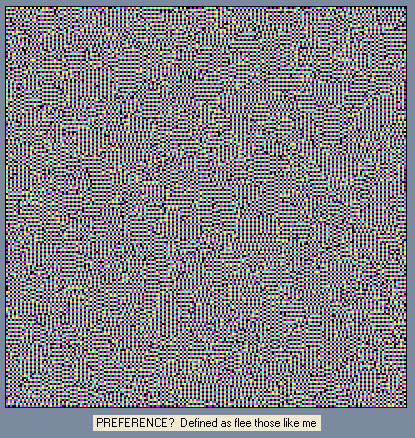 These simulations were run until they stabilized. |
Segregation - Preferences of increasing complexity: Attending to your own, to one other, and to combinations of others. |
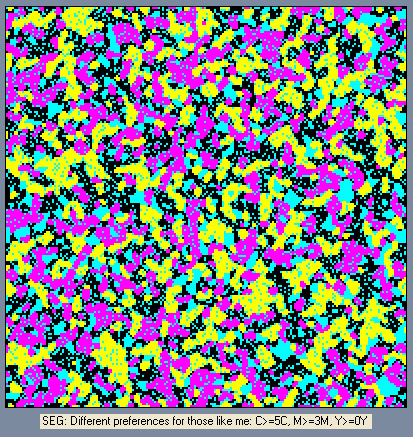 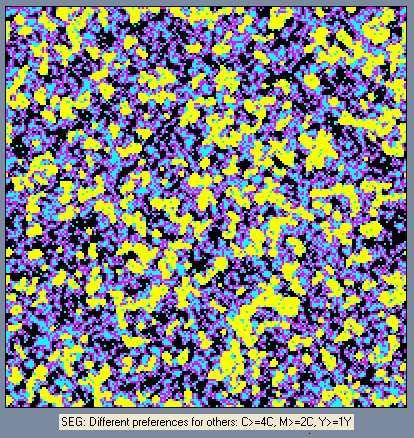 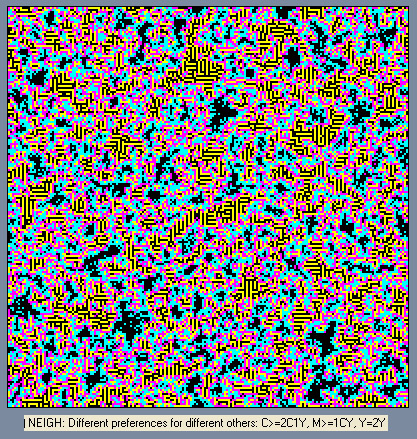 These simulations were run until they stabilized. |
Segregation - Attending to empty space. |
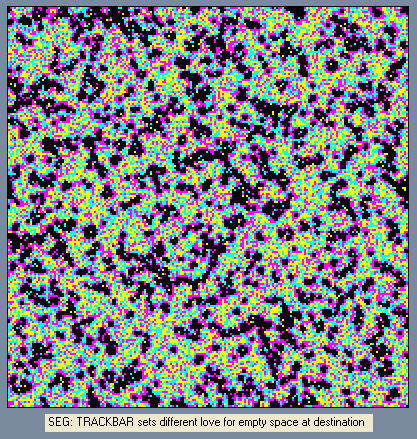 This simulation was run until it stabilized with each agent desiring one neighboring empty cell. |
Segregation - Conflicting preferences. |
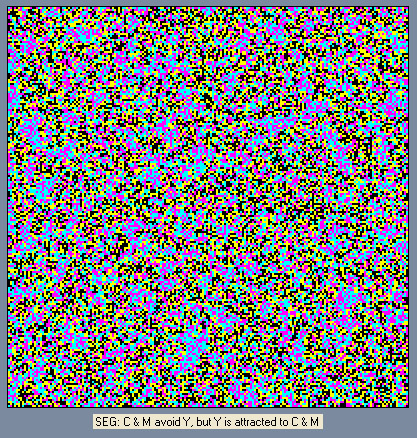 This simulation was run until it stabilized. |
Segregation - Temporal delay constraints on different types. |
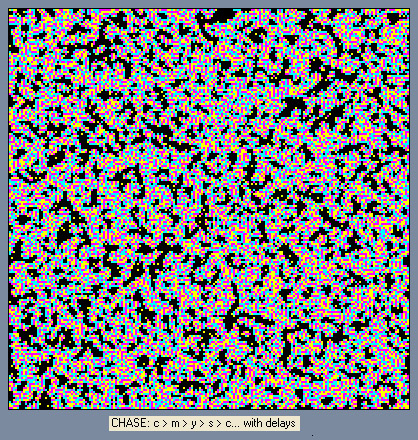 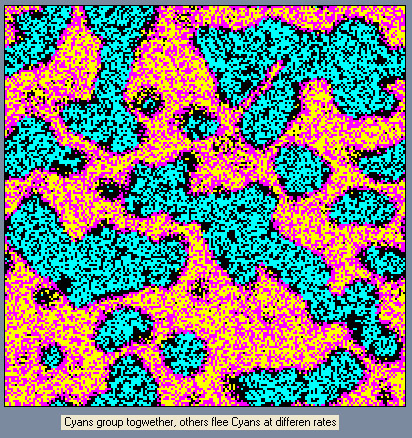 These simulations were run until they stabilized. |
Segregation - Spatial mobility constraints on different types. |
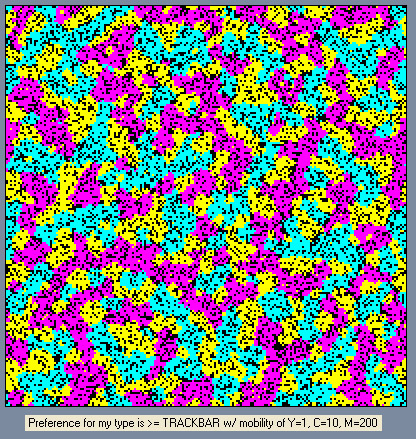 This simulation was run until it stabilized. |
Segregation - CROWDS, COPS & AGITATORS Inspired by Rob Axtell Crowds (yellow) influenced by aggitators (magenta) and police (cyan). Aggitators and police move randomly. Members of the crowd run away. Left panel or diagonal: Mappings of who is where. Right panel or diagonal: Mappings of crowd levels of calm (green) and excitement (orange). |
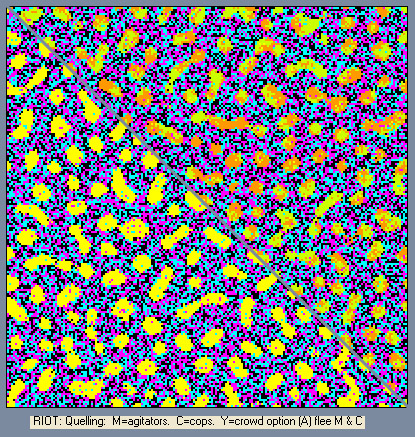 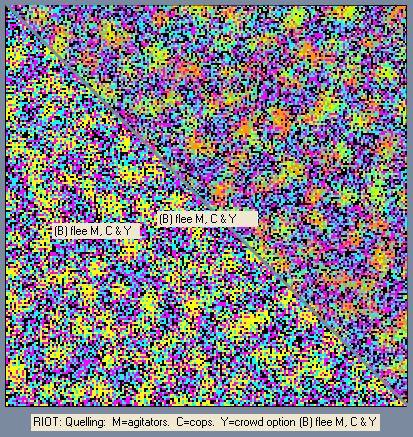 These simulations were run until they stabilized. |
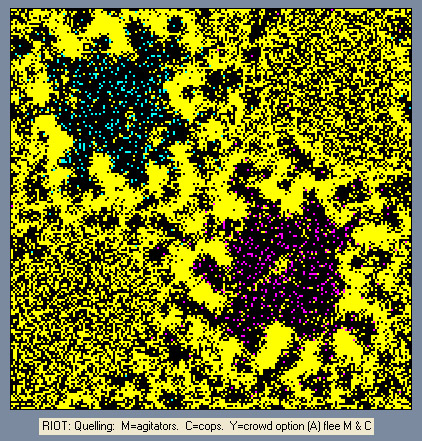 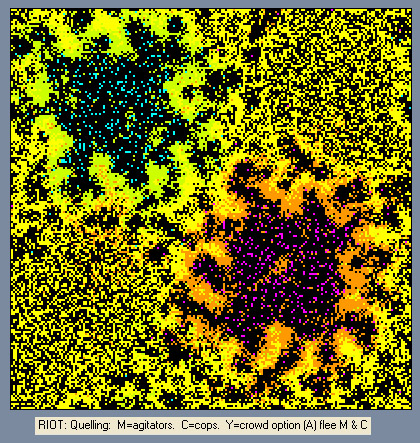 Initialized with one large crowd with a few cops and few aggitators inserted in two different locations. Members of the crowd avoid both the cops and aggitators. This simulation was run until it stabilized. |
 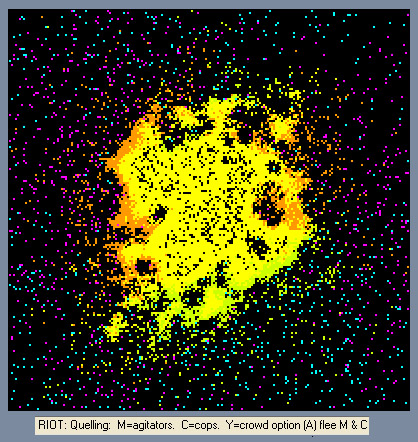 Initialized with one large crowd with a few cops and few aggitators circling them. Members of the crowd avoid both the cops and aggitators. This simulation was run until it stabilized. |
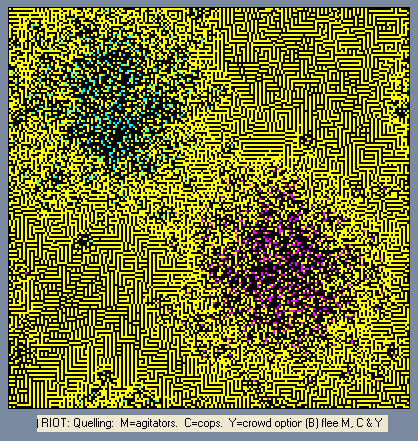 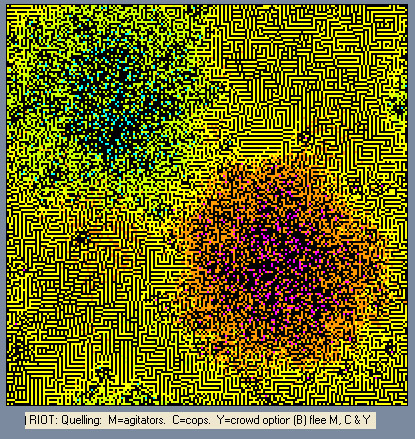 Initialized with one large crowd with a few cops and few aggitators inserted in two different locations. Members of the crowd avoid everyone. This simulation was run until it stabilized. |
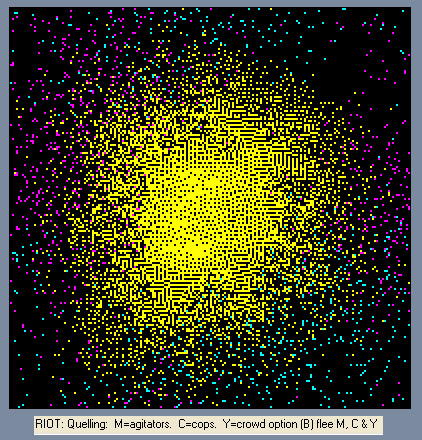 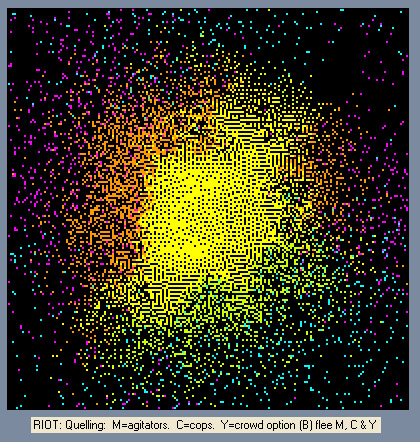 Initialized with one large crowd with a few cops and few aggitators circling them. Members of the crowd avoid everyone. This simulation was run until it stabilized. |